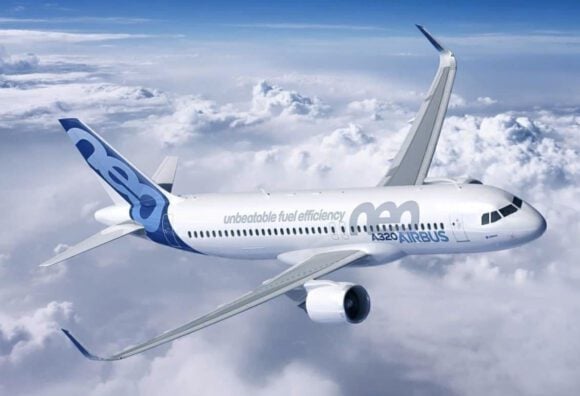During the airline panel discussion of the ISTAT conference in Prague, Allegiant caught our attention. Tom Doxey, VP of Fleet & Corporate Finance explained their business model and what makes them unique as an airline.
According to CIT, the big four airlines in the US serve about 85% of the market in terms of RPK. Their predominantly hub and spoke system opens up a niche for Allegiant, which carries mainly leisure travelers from northern secondary airports directly to vacation destinations. Allegiant’s largest vacation destination cities are Orlando and Las Vegas. While the domestic seats offered at medium and small airports have decreased over the last seven years, it has opened space for Allegiant to grow. Moreover, Allegiant serves the airports at low frequency to have load factors of 90% and higher.
That said, Allegiant fits very well to the attributes of a ULC. But there is a significant difference: their MD-80 fleet, which consists of 52 aircraft, has a lower fixed cost compared to newer aircraft. Their presentation states the following three cost blocks for their aircraft: Fuel, ownership and maintenance:
While fuel and maintenance expenses strongly depend on the amount the aircraft is used, ownership costs remain approximately the same independent of usage.
Nevertheless, with a higher aircraft usage, the ownership costs can be spread over more flight hours. If, for example, the airline uses the MD80 for 10 hours per day instead of 5, the airline’s ownership costs on a per hour basis will decrease to approximately half the amount while fuel burn and maintenance is about the same on a per hour basis.
That highlights an important point: newer aircraft with higher ownership costs (which consist aircraft rent, depreciation & amortization) force the airline to use the aircraft a lot more to achieve competitive cost level for the ownership costs.
And that is the big advantage of the MD80 over newer aircraft. Allegiant’s operation is therefore very flexible to meet current demand. Their MD80 use expressed in block hours per aircraft varies between seven and four hours per day during on and off peak season. Translated to Allegiant’s CASM (cost per available seat mile) for the entire fleet excluding the fuel costs, they operate at the same cost level as Spirit, but with a daily utilization of only 5.7 hours. Put differently, Allegiant has a similar cost structure as Spirit Airlines, but Spirit has to have their aircraft in the air more than twice as much to get to that level, an impressive advantage for Allegiant.
Taking fuel into consideration, Allegiant’s MD80 consume in excess of 25% more than its A320s on a per seat basis. But the low fuel price and the low fixed cost make the MD80 an excellent aircraft for the moment.
Mr. Doxey explained that they are constantly evaluating the cost and if fuel price rises, their flexibility allows them to phase out less fuel-efficient aircraft. Allegiant has 18 A320 family aircraft in its fleet today and has already committed to another 32 A319 and A320aircraft for further growth or to replace the MD80s.
Still Allegiant’s aim is to keep fixed costs at a minimum and therefore they are looking at secondhand aircraft rather than new. The A320s currently used for example are ex-EasyJet and Iberia. They continuously evaluate potential aircraft transactions and seek to acquire additional aircraft opportunistically.
Bottom line, Allegiant is a winner from low fuel prices and very good at managing their core business, and keeping the costs low. The past 51 consecutive quarters the airline has been profitable, proving that their strategy is right. Furthermore, with the flexibility of phasing out MD80s their “hedging” against rising fuel prices is smart and might be an advantage over direct competitors to win further market share.
Views: 34




I’ve been interested in seeing some discussion of Allegiant’s business model for a while. Thanks.
Do you know if these figures are average per-passenger-boarding costs or some other metric?
There’s some other interesting takeaways from these slides beyond how Allegiant pulls their costs in line with other airlines despite lower utilization. For example, look at how low Spirit’s maintenance costs are (according to Allegient, at least). The does come a point when buying a cheap ticket makes me wonder exactly what makes it so cheap. While Spirit’s safety record seems fine so far, their purported financial focus does give me pause (even ignoring their terrible customer satisfaction ratings).
And look at how high Jet Blue’s maintenance costs supposedly are. I wonder why this would be. Certainly the E-Jets, even with the teething issues Jetblue has complained about, aren’t so bad as to bring their average (including their Airbus frames) to such a high level compared to Southwest? I’m also surprised how much higher they claim Jet Blue’s overall relative operating costs are.
The relative sum of Jet Blue’s supposed costs compared to the others also surprises me. The only times I’ve flown on Jet Blue (I live on the West Coast, out of their main operating area), Jet Blue had a really big advantage on ticket price over all the other airlines I checked (which didn’t include Spirit or Allegiant, but did include Southwest).
Thank you for your questions iamlucky13.
The costs are on a per customer basis. Additionally Allegiant states in their management presentation that they have non-aircraft related costs, labor (24$) and other (21$). That sums up to a total cost of 104$ per passenger. The other carriers total costs per passenger are: SAVE (102$), LUV (138$) and JBLU (157$).
The maintenance costs correlate to the aircraft age, the older the aircraft the higher the maintenance costs. Allegiant’s MD80’s are on average 22 years old and their A320’s 11 years old. Spirit has on average of about 5-6 years which in general means a cost advantage for Spirit while they have higher ownership costs. Moreover Spirit operates with one (big) aircraft family (76 A320s) while Allegiant operates three smaller sub fleets (A320, MD80 and B757) and that gives Spirit a stronger basis for negotiation with MROs.
It is a very interesting question, why JetBlue supposedly has bigger maintenance costs. Their fleet is not as old as Allegiant’s and as you mentioned they have a pretty homogenous fleet (two types). While some parts have to be replaced on a per cycle basis. others have a limit in flight hours. Since the trip length on a average JetBlue flight is longer, I assume that this is partially the reason for higher maintenance costs.
Furthermore there is a big difference in amount of seats per aircraft between Spirit, Allegiant and JetBlue. For example Jetblue’s A320 operates with 152 seats on board, Spirit with 178 seats and Allegiant with 177 seats. Distributing the maintenance costs to another 25/26 passengers brings a significant maintenance cost advantage with it. The effect increases when looking at load factors which historically have been higher for both Spirit and Allegiant.
Thanks for the followup. This was very enlightening reading.